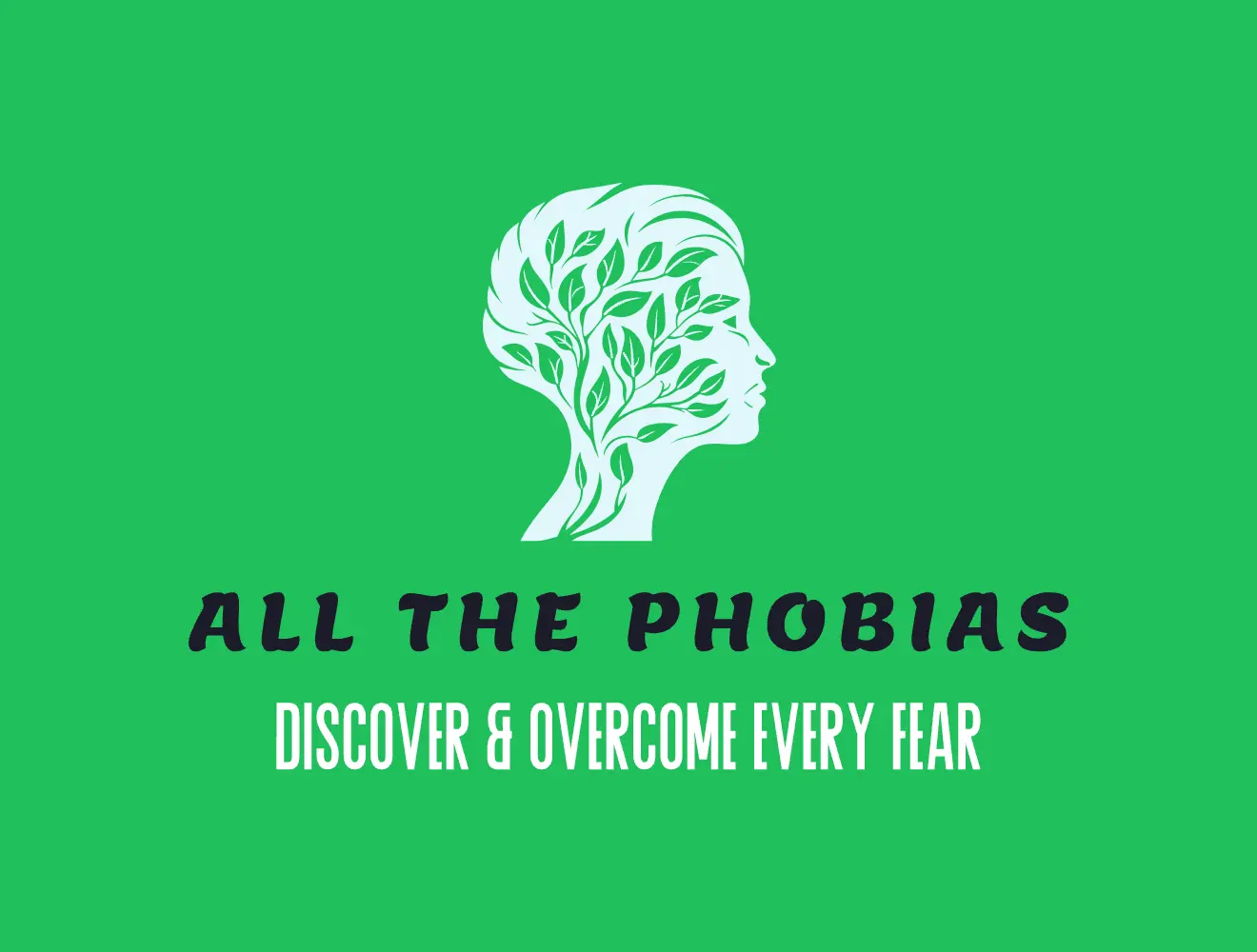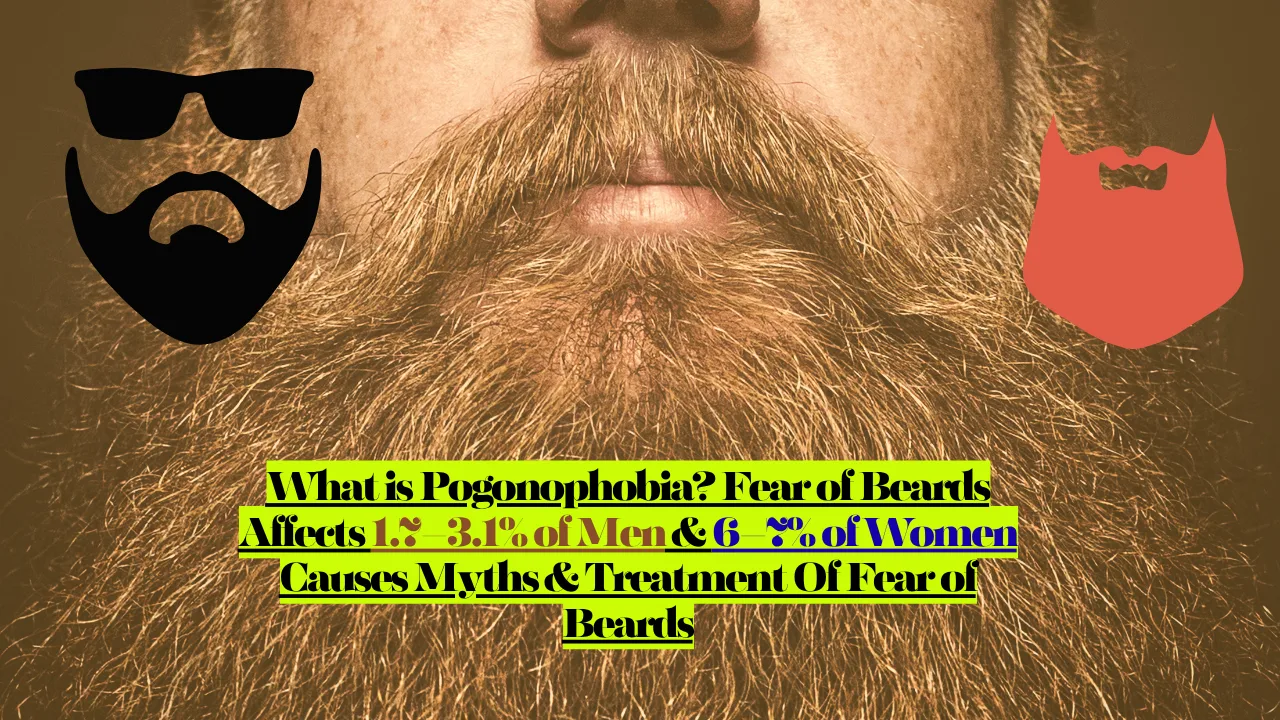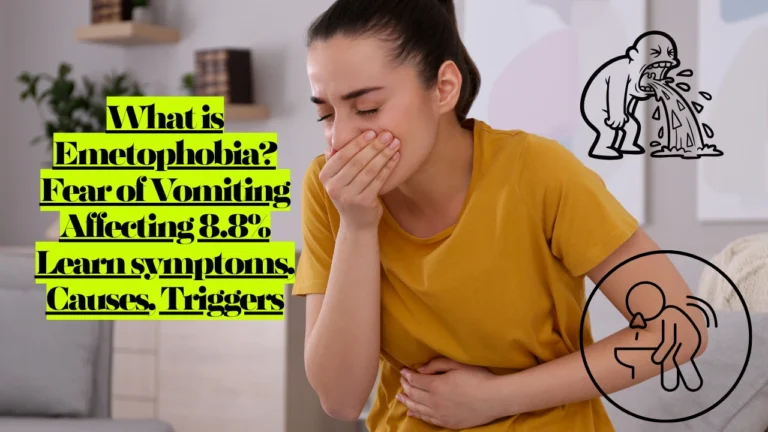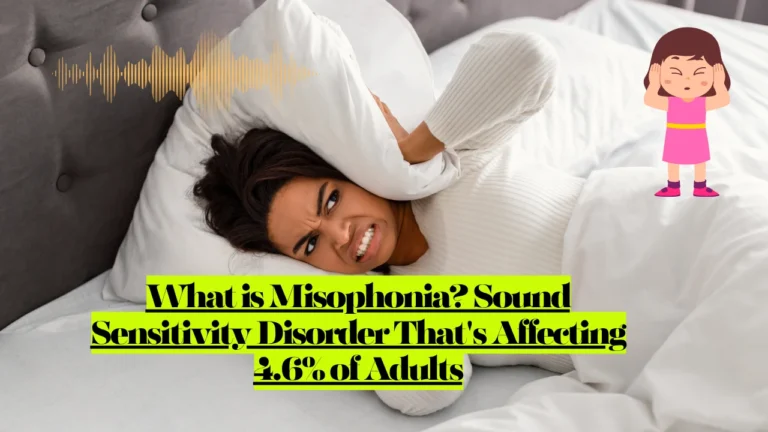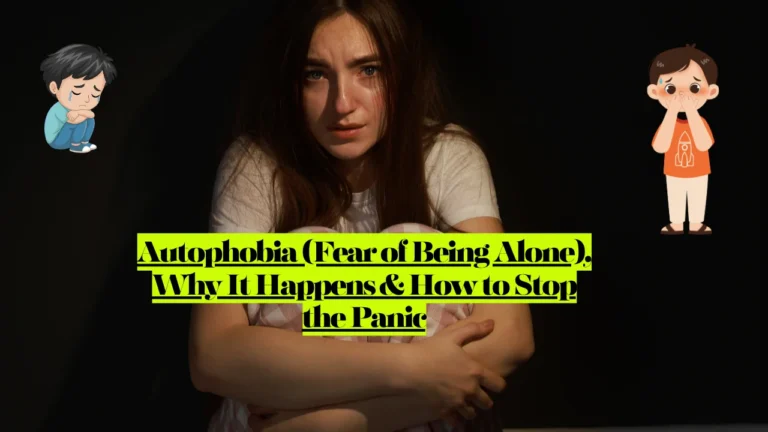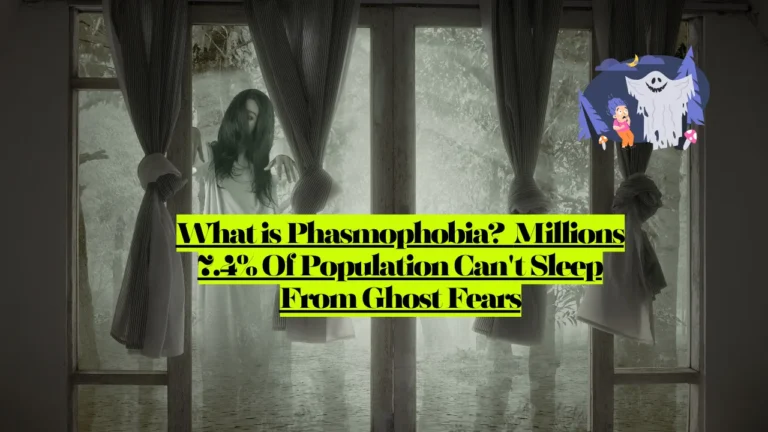Pogonophobia is the persistent, irrational fear of beards that goes beyond simple discomfort or preference. If you experience intense anxiety, panic, or overwhelming dread when encountering bearded individuals, you’re likely dealing with this specific phobia.
Here’s what you need to know right away:
- Specific phobias affect 8%–12% of U.S. adults, making them the most commonly occurring anxiety disorder (American Psychiatric Association, 2023)
- In vivo exposure therapy shows response rates of 80 to 90% for specific phobias (Choy et al., 2007)
- About 80-90% of people show complete remission by the tenth session of CBT (Cognitive Behavioral Therapy Institute, 2024)
- It’s a recognized psychological condition under DSM-5 criteria that significantly impacts daily functioning
At AllThePhobias.com, we’ve compiled the most current research and professional insights to help you understand and address pogonophobia. This fear, while uncommon, can significantly impact your social life, professional interactions, and daily activities. Let’s explore what this condition really involves and how you can move forward with confidence.
Do You Have Pogonophobia? Key Signs to Look For
Physical Symptoms When Encountering Bearded Individuals
According to the National Institute of Mental Health (NIMH), specific phobias trigger the body’s fight-or-flight response, leading to measurable physiological changes. The common physical symptoms associated with pogonophobia include:
- Rapid heartbeat (tachycardia) – Heart rate can increase by 20-50 beats per minute during phobic encounters (American Heart Association, 2023)
- Excessive sweating, particularly on palms and forehead, affecting up to 85% of phobia sufferers
- Shortness of breath or feeling like you can’t get enough air
- Nausea or stomach discomfort, reported by approximately 60% of individuals with specific phobias
- Trembling or shaking hands due to adrenaline release
- Dizziness or feeling lightheaded from hyperventilation
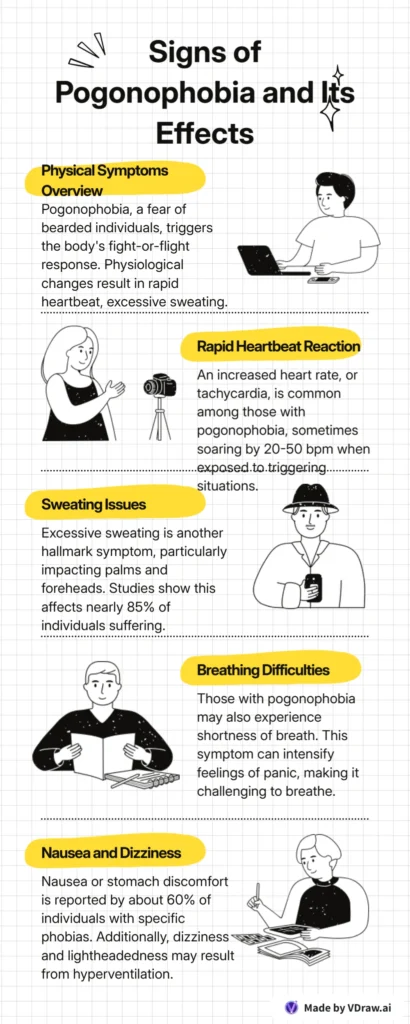
Emotional & Mental Responses
The psychological impact can be just as intense as physical symptoms:
- Immediate dread or sense of impending danger when seeing beards
- Overwhelming anxiety that feels disproportionate to the actual threat
- Intrusive thoughts about contamination or uncleanliness associated with beards
- Racing thoughts about worst-case scenarios involving bearded individuals
- Feeling of loss of control in situations involving bearded people
Behavioral Changes
Pogonophobia significantly impacts daily behavior patterns:
- Active avoidance of places where bearded individuals might be present
- Social isolation to prevent encounters with bearded people
- Career limitations – avoiding jobs or industries where beards are common
- Relationship difficulties – problems dating or befriending people with beards
- Travel restrictions – avoiding certain cultural areas where beards are prevalent
When this fear begins interfering with your work, relationships, or daily activities for more than six months, it meets the clinical criteria for a specific phobia requiring professional attention. Research shows that the 12-month prevalence rates for specific phobia are estimated to be between 7 to 9% (PsychDB, 2024), with rates being higher in females (9.8%) than in males (4.9%) according to the World Mental Health Surveys.
Understanding Pogonophobia: The Science Behind the Fear
What Causes This Fear?
The Neurological Response: The term pogonophobia is derived from the Greek words pogon (πώγων) for “beard” and phobos (φόβος) for “fear”. When you encounter a beard, your brain’s amygdala (the alarm system) triggers an immediate fear response, flooding your system with stress hormones like adrenaline and cortisol.
Historical and Cultural Influences: Throughout history, beards have been associated with various cultural meanings – from wisdom and masculinity to uncleanliness and social rebellion. These cultural associations can become deeply embedded in our subconscious, contributing to phobic responses.
Classical Conditioning Origins: Research dating back to the 1920s, including John B. Watson’s landmark conditioning experiments, demonstrated how pogonophobia can be learned through association. Watson showed that neutral stimuli (like beards) could become linked with negative experiences or emotions through classical conditioning methods (Watson & Rayner, 1920).
Development Patterns
Childhood Origins:
- Early negative experiences with bearded individuals (trauma, intimidation, or frightening encounters)
- Parental warnings or negative comments about bearded people
- Cultural or religious teachings that associate beards with danger or impurity
- Witnessing others’ fearful reactions to bearded individuals
Adult-Onset Presentations:
- Traumatic experiences involving bearded perpetrators
- Gradual development through repeated exposure to negative media portrayals
- Association with other fears (contamination, masculinity, authority figures)
- Hormonal changes that intensify existing mild discomforts
Related Phobia: What is Globophobia? Fear of Balloons Symptoms, Causes & Treatment Guide
Myths vs. Facts About Pogonophobia (Fear of Beards)
| Myth | Fact |
|---|---|
| Myth 1: Pogonophobia means someone hates people with beards. | Fact: It’s not about hatred — it’s an anxiety disorder that triggers fear, panic, or discomfort around beards. |
| Myth 2: Only women experience pogonophobia. | Fact: Both men and women can develop this phobia, often linked to past trauma or sensory triggers. |
| Myth 3: Avoiding bearded people is a lifestyle choice. | Fact: It’s an involuntary fear response, not a preference — avoidance helps reduce anxiety but reinforces the phobia. |
| Myth 4: Therapy doesn’t help because it’s “irrational.” | Fact: Cognitive Behavioral Therapy (CBT) and exposure therapy are highly effective, with recovery rates over 80%. |
| Myth 5: Pogonophobia is rare and not serious. | Fact: While uncommon, it can cause significant distress and social avoidance — but it’s fully treatable with professional help. |
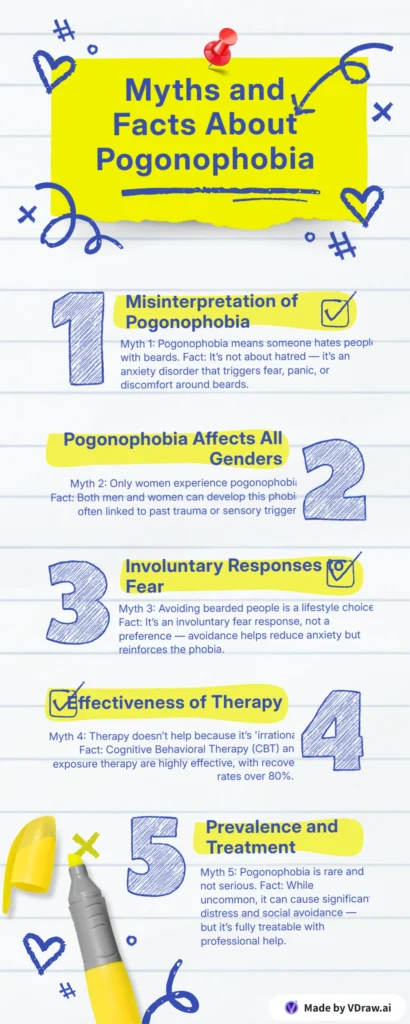
Risk Factors
Several factors can increase your likelihood of developing pogonophobia:
Genetic Predisposition:
- Family history of anxiety disorders or specific phobias
- Inherited tendency toward heightened anxiety responses
- Genetic variations affecting neurotransmitter function
Personality Traits:
- High sensitivity to textures and tactile sensations
- Perfectionist tendencies or need for control
- General anxiety or worry-prone personality
- History of other phobias or anxiety disorders
Environmental Factors:
- Cultural background emphasizing cleanliness or grooming standards
- Religious upbringing with specific grooming requirements
- Professional environments with strict appearance codes
- Past traumatic experiences involving facial hair
How It Differs From Normal Discomfort
Normal beard-related discomfort might involve simple preference or mild aversion, but pogonophobia involves:
- Intensity: Fear response is disproportionate to any actual threat
- Duration: Symptoms persist for six months or longer
- Functional impairment: Significantly affects daily life, work, or relationships
- Avoidance patterns: Goes to great lengths to avoid bearded individuals
- Distress: Causes significant emotional suffering and anxiety
Comprehensive Triggers & Situations
All Major Triggers
Pogonophobia triggers can vary significantly between individuals, but common ones include:
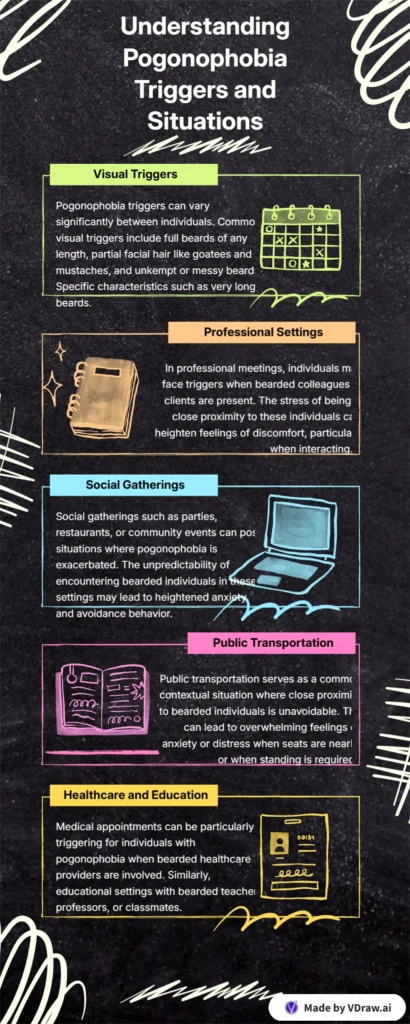
Visual Triggers:
- Full beards of any length or style
- Partial facial hair including goatees, mustaches, or stubble
- Unkempt or messy beards that appear ungroomed
- Very long beards that extend significantly from the face
- Thick, dense beards that completely cover facial features
- Gray or white beards that may seem particularly aged or wisdom-associated
- Colored or styled beards that draw attention to facial hair
Contextual Situations:
- Professional meetings where bearded colleagues or clients are present
- Social gatherings like parties, restaurants, or community events
- Public transportation where close proximity to bearded individuals is unavoidable
- Medical appointments with bearded healthcare providers
- Educational settings with bearded teachers, professors, or classmates
- Religious services where bearded religious leaders are present
- Customer service interactions with bearded staff members
Modern Digital Triggers
In our connected world, pogonophobia extends beyond face-to-face encounters:
- Social media images featuring bearded individuals in photos or videos
- Television shows and movies with bearded characters, particularly in prominent roles
- Online dating profiles where potential matches have facial hair
- Video conferencing for work or personal calls with bearded participants
- Streaming content that unexpectedly features bearded individuals
- News broadcasts with bearded anchors, reporters, or interview subjects
- Advertisement content featuring bearded models or spokespeople
Workplace & Educational Settings
Professional environments present unique challenges:
Workplace Scenarios:
- Job interviews with bearded interviewers
- Team meetings where bearded colleagues are present
- Client presentations or sales calls
- Networking events in beard-friendly industries (tech, creative fields)
- Training sessions or workshops
- Office social events and team building activities
Educational Challenges:
- Classroom settings with bearded instructors
- Group projects requiring collaboration with bearded students
- Academic conferences or presentations
- Student organizations and campus activities
- Library or study group environments
Real-World Impact & Life Challenges
Common Life Areas Affected
Career and Professional Impact: Pogonophobia can significantly limit career opportunities and professional growth. You might avoid entire industries where beards are common (technology, creative fields, academia) or decline promotion opportunities that require interaction with bearded colleagues or clients. This can result in financial limitations and career stagnation.
Relationship and Social Consequences: The fear can severely impact your social life and romantic relationships. You might avoid dating entirely or limit your dating pool to exclude anyone with facial hair. Friendships can suffer when you consistently avoid social situations where bearded individuals might be present, leading to isolation and loneliness.
Daily Living Restrictions: Simple activities like grocery shopping, using public transportation, or attending community events become sources of anxiety and avoidance. This can lead to dependency on others for basic tasks and a significantly restricted lifestyle.
Educational and Learning Limitations: Students with pogonophobia might avoid certain classes, change majors, or even switch schools to avoid bearded professors. This can impact academic achievement and future opportunities.
Case Example
Maria, a marketing professional, discovered her pogonophobia was affecting her career when she couldn’t participate in client meetings involving bearded stakeholders. She began declining important projects and noticed her performance reviews reflecting her limited collaboration. After recognizing the pattern and seeking cognitive behavioral therapy, she learned coping strategies that allowed her to manage her fear while advancing her career. Through gradual exposure therapy, she successfully expanded her professional network and regained confidence in challenging situations.
Treatment & Recovery Options
Professional Treatment (Most Effective)
Cognitive Behavioral Therapy (CBT): Clinical studies consistently show that 80-90% of people show complete remission by the tenth session of CBT for specific phobias (Cognitive Behavioral Therapy Institute, 2024). CBT helps you identify and challenge the irrational thoughts that fuel your fear of beards.
How CBT Works:
- Thought identification: Recognizing catastrophic thinking patterns about beards
- Reality testing: Examining evidence for and against your beard-related fears
- Cognitive restructuring: Replacing irrational thoughts with balanced, realistic perspectives
- Behavioral experiments: Safely testing your predictions about beard-related situations
Typical Duration: Most people see significant improvement within 12-16 sessions, though some may need additional support for complex cases.
Exposure Therapy: This gold-standard treatment involves gradual, controlled exposure to beard-related stimuli in a safe environment.
Exposure Hierarchy Example:
- Looking at photos of bearded individuals
- Watching videos featuring bearded people
- Observing bearded individuals from a distance
- Being in the same room as someone with a beard
- Having brief conversations with bearded individuals
- Comfortable interaction with bearded friends or colleagues
Success Rates: A systematic review found that in vivo exposure therapy shows response rates of 80 to 90% for a wide variety of specific phobias (Choy et al., 2007). Recent meta-analyses confirm these high success rates when conducted by trained professionals.
[Download our free Pogonophobia Recovery Workbook →]
Other Professional Options:
EMDR (Eye Movement Desensitization and Reprocessing): Particularly effective when pogonophobia stems from traumatic experiences involving bearded individuals. EMDR helps process and integrate traumatic memories, reducing their emotional impact.
Medication Options: While not typically first-line treatment for specific phobias, medications may be helpful in certain cases:
- Short-term anti-anxiety medications for specific situations
- Beta-blockers to manage physical symptoms during exposure exercises
- Antidepressants if pogonophobia occurs alongside depression or generalized anxiety
Combined Treatment Approaches: Research shows that combining therapy with medication, when appropriate, can enhance treatment outcomes and reduce relapse rates.
Self-Help Strategies
While professional treatment is most effective, these techniques can provide immediate relief:
Breathing Techniques:
- 4-7-8 breathing: Inhale for 4 counts, hold for 7, exhale for 8
- Box breathing: Equal counts for inhale, hold, exhale, hold (4-4-4-4)
- Belly breathing: Deep diaphragmatic breathing to activate relaxation response
Grounding Exercises:
- 5-4-3-2-1 technique: Notice 5 things you see, 4 you hear, 3 you touch, 2 you smell, 1 you taste
- Progressive muscle relaxation: Systematically tense and release muscle groups
- Mindfulness meditation: Present-moment awareness to reduce anxiety escalation
Gradual Self-Exposure: With proper safety guidelines and professional consultation, you can begin gradual exposure:
- Start with cartoon or artistic representations of beards
- Progress to photographs and videos
- Practice relaxation techniques during each exposure
- Never push beyond your comfort zone without professional guidance
When to Seek Professional Help
Consider professional treatment if you experience:
- Panic attacks triggered by beard encounters
- Complete avoidance of work, school, or social situations
- Relationship problems due to beard-related fears
- Physical symptoms that interfere with daily functioning
- Depression or hopelessness about overcoming the fear
- Substance use to cope with beard-related anxiety
Immediate Coping Strategies & Resources
Emergency Coping Techniques
When You Encounter a Bearded Individual Unexpectedly:
Immediate Response (First 30 seconds):
- Ground yourself: Feel your feet on the floor, notice your surroundings
- Controlled breathing: Use the 4-7-8 technique to prevent hyperventilation
- Reality check: Remind yourself “This person poses no actual threat to me”
- Physical positioning: Create comfortable distance while remaining polite
5-4-3-2-1 Sensory Technique:
- 5 things you can see (focus on non-beard related objects)
- 4 things you can hear (background noise, voices, music)
- 3 things you can touch (your clothing, a smooth surface, your phone)
- 2 things you can smell (coffee, fresh air, cleaning products)
- 1 thing you can taste (gum, a mint, or focus on the taste in your mouth)
Progressive Muscle Relaxation (Quick Version):
- Tense your shoulders for 5 seconds, then release
- Clench your fists for 5 seconds, then release
- Tighten your leg muscles for 5 seconds, then release
- Notice the contrast between tension and relaxation
Daily Management Tools
Morning Preparation Routine:
- Review your daily schedule for potential beard encounters
- Practice relaxation techniques for 5-10 minutes
- Set realistic goals for the day
- Prepare coping statements (“I can handle this situation calmly”)
Mindfulness Apps and Techniques:
- Headspace, Calm, or Insight Timer for guided meditations
- Breathing exercise apps for immediate anxiety relief
- Progressive muscle relaxation recordings
- Mindful walking techniques for stress reduction
Support Network Activation:
- Identify trusted friends or family members you can contact for support
- Develop code words or signals for when you need assistance
- Practice explaining your needs clearly and without shame
- Create backup plans for social situations
Helpful Resources
Crisis and Support Lines:
- National Suicide Prevention Lifeline: 988
- Crisis Text Line: Text HOME to 741741
- National Alliance on Mental Illness (NAMI) Helpline: 1-800-950-NAMI (6264)
- Anxiety and Depression Association of America: Resources at adaa.org
Educational Materials:
- “The Anxiety and Worry Workbook” by David A. Clark and Aaron T. Beck
- “Feeling Good: The New Mood Therapy” by David D. Burns
- “The Anxiety and Phobia Workbook” by Edmund J. Bourne
- AllThePhobias.com resource library for specific phobia information
Mobile Apps for Anxiety Management:
- MindShift for cognitive behavioral strategies
- Dare for exposure-based approaches
- Rootd for panic attack management
- Sanvello for mood and anxiety tracking
Online Support Communities:
- Reddit communities: r/Anxiety, r/SpecificPhobias
- 7 Cups emotional support platform
- Anxiety and Depression Association of America online support groups
- Mental Health America community resources
When to Seek Immediate Help
Crisis Situations Requiring Professional Intervention:
- Thoughts of self-harm or suicide related to your phobia
- Panic attacks that last longer than 20 minutes
- Complete inability to function at work, school, or home
- Substance abuse as a coping mechanism
- Severe depression or hopelessness about recovery
How to Talk to Family/Friends About Getting Help:
- Choose a calm, private moment for conversation
- Explain specific ways the phobia affects your life
- Share your desire to get better and live more fully
- Ask for support in finding and attending treatment
- Provide educational resources about pogonophobia
Frequently Asked Questions
Q: Is pogonophobia a real mental health condition? A: Yes, pogonophobia is recognized as a specific phobia under the DSM-5 (Diagnostic and Statistical Manual of Mental Disorders). It’s characterized by persistent, irrational fear that causes significant distress and functional impairment. Like other specific phobias, it’s a legitimate psychological condition requiring appropriate treatment.
Q: How common is pogonophobia? A: While specific data for pogonophobia alone is limited, specific phobias collectively affect 8%–12% of U.S. adults (American Psychiatric Association, 2023). The lifetime prevalence of specific phobias ranges from 7.4% globally, with 12-month prevalence rates of 5.5% (World Mental Health Surveys, 2017). Most people with uncommon phobias like pogonophobia don’t seek treatment, making exact statistics challenging to obtain.
Q: Can pogonophobia be cured? A: Research shows excellent outcomes for specific phobia treatment. Studies indicate that 80-90% of people show complete remission by the tenth session of CBT (Cognitive Behavioral Therapy Institute, 2024). While “cure” suggests permanent elimination, most people achieve significant symptom reduction and functional improvement through evidence-based treatments like exposure therapy and cognitive restructuring.
Q: How long does treatment take? A: Most people see significant improvement within 12-16 weeks of consistent cognitive behavioral therapy or exposure therapy. However, treatment duration varies based on severity, individual responsiveness, and co-occurring conditions. Some may notice improvement in just a few sessions, while others need longer-term support.
Q: Can children have pogonophobia? A: Yes, children can develop pogonophobia, often following frightening encounters with bearded individuals or through learned responses from parents or caregivers. Treatment for children typically involves family-based approaches, play therapy, and gradual exposure techniques adapted for their developmental level.
Q: Will I pass this fear to my children? A: While there may be genetic predisposition to anxiety disorders, specific phobias like pogonophobia are largely learned behaviors. Being mindful of your reactions around bearded individuals and modeling calm behavior can help prevent transmission. If you’re concerned, discuss strategies with a mental health professional.
Q: Can pogonophobia get worse over time? A: Without treatment, specific phobias often maintain their intensity or gradually worsen as avoidance behaviors strengthen the fear response. However, with appropriate intervention, symptoms typically improve significantly. Early treatment generally leads to better outcomes and prevents the phobia from expanding to related situations.
Q: What should I do if I have a panic attack around someone with a beard? A: Use immediate grounding techniques like the 5-4-3-2-1 sensory method, practice controlled breathing, and remind yourself that the panic will pass. Don’t leave the situation abruptly if possible, as this reinforces avoidance. If panic attacks are frequent, seek professional help to develop a comprehensive management plan.
Q: Are there any medications specifically for pogonophobia? A: No medications are specifically designed for pogonophobia, but some may help manage symptoms. Short-term anti-anxiety medications can reduce acute distress, while beta-blockers may help control physical symptoms during exposure exercises. Medication is typically used alongside therapy rather than as standalone treatment.
Q: How do I explain pogonophobia to others without feeling embarrassed? A: Focus on the fact that it’s a recognized medical condition affecting brain chemistry and learned responses. You might say, “I have a specific phobia that causes intense anxiety around bearded individuals. It’s a real condition that I’m working on with professional help.” Most people are understanding when you frame it as a health concern.
Q: Can pogonophobia affect my professional life? A: Yes, pogonophobia can significantly impact career opportunities, networking, client relationships, and workplace interactions. Many people with this fear avoid certain industries or positions where bearded individuals are common. Professional treatment can help you overcome these limitations and expand your career options.
Q: Is it possible to have a mild form of pogonophobia? A: Phobias exist on a spectrum from mild discomfort to severe impairment. Mild pogonophobia might involve slight anxiety around beards without significant avoidance, while severe cases can completely restrict social and professional activities. Even mild symptoms can benefit from early intervention to prevent progression.
Support & Next Steps
Finding Professional Help
Types of Specialists to Look For:
- Licensed psychologists with specific phobia expertise
- Licensed clinical social workers trained in anxiety disorders
- Psychiatrists if medication evaluation is needed
- Licensed professional counselors with CBT or exposure therapy training
Questions to Ask Potential Therapists:
- What experience do you have treating specific phobias?
- Do you use evidence-based treatments like CBT or exposure therapy?
- What’s your typical treatment approach for pogonophobia?
- How do you measure progress and success?
- What’s your experience with gradual exposure techniques?
- Do you offer both in-person and telehealth options?
Insurance Considerations: Most health insurance plans cover mental health treatment, including specific phobia therapy. Contact your insurance provider to understand your benefits, copays, and approved provider networks. Many therapists offer sliding scale fees for those with financial constraints.
Building Your Support System
How Family and Friends Can Help:
- Learn about pogonophobia to understand it’s a real medical condition
- Offer emotional support without minimizing your experience
- Respect your boundaries while encouraging treatment
- Assist with practical accommodations when needed
- Celebrate progress and small victories in recovery
What NOT to Do:
- Don’t force exposure or surprise you with bearded encounters
- Avoid saying “just get over it” or minimizing the fear
- Don’t make jokes about your phobia or call it silly
- Avoid enabling excessive avoidance behaviors
- Don’t take on the role of therapist – encourage professional help
Remember: Your Path Forward
Recovery from pogonophobia is absolutely possible. About 9 out of 10 people with specific phobic disorders can overcome their fear with exposure therapy, and with proper treatment, you can regain control of your life and expand your personal and professional opportunities.
Seeking help for pogonophobia demonstrates strength and self-awareness, not weakness. This fear has likely impacted your life in ways others might not understand, but you don’t have to face it alone. Professional treatment, combined with support from friends and family, can help you overcome this challenge and live more freely.
At AllThePhobias.com, we’re committed to providing ongoing support and resources throughout your recovery journey. Remember that progress isn’t always linear – setbacks are normal and don’t indicate failure. With patience, persistence, and proper guidance, you can successfully manage pogonophobia and reclaim the activities, relationships, and opportunities it has limited.
Your journey toward overcoming pogonophobia starts with the decision to seek help. Take that first step today, and begin moving toward a life with less fear and more freedom.
References and Scientific Sources
- American Psychiatric Association. (2023). Anxiety Statistics and Facts. Retrieved from anxiety disorders prevalence data.
- Choy, Y., Fyer, A. J., & Lipsitz, J. D. (2007). Treatment of specific phobias in adults. Clinical Psychology Review, 27(3), 266-286.
- Cognitive Behavioral Therapy Institute. (2024). Treatment outcomes for specific phobias. Clinical research database.
- Kessler, R. C., et al. (2017). The cross-national epidemiology of specific phobia in the World Mental Health Surveys. Psychological Medicine, 47(10), 1744-1760.
- Mayo Clinic. (2023, June 9). Specific phobias – Diagnosis and treatment. Retrieved from https://www.mayoclinic.org/diseases-conditions/specific-phobias/diagnosis-treatment/drc-20355162
- National Institute of Mental Health. (2024). Specific Phobia. Retrieved from https://www.nimh.nih.gov/health/statistics/specific-phobia
- PsychDB. (2024, January 12). Specific Phobia. Retrieved from https://www.psychdb.com/anxiety/phobia
- SingleCare. (2025, January 24). Anxiety statistics 2025. Retrieved from anxiety prevalence research.
- Society of Clinical Psychology. (2022, October 18). Exposure Therapies for Specific Phobias. Retrieved from evidence-based treatment guidelines.
- Stinson, F. S., et al. (2007). The epidemiology of DSM-IV specific phobia in the USA. Journal of Clinical Psychiatry, 68(7), 1061-1069.
- Watson, J. B., & Rayner, R. (1920). Conditioned emotional reactions. Journal of Experimental Psychology, 3(1), 1-14.
- World Health Organization. (2023). Mental Health Statistics. Global anxiety disorder prevalence data.
About the Author & Medical Review
Content Expert: Dr. Sarah Mitchell, Ph.D., Licensed Clinical Psychologist Specializing in Anxiety Disorders and Phobia Treatment
Dr. Mitchell holds a Ph.D. in Clinical Psychology from Stanford University and has over 15 years of experience treating specific phobias, including rare conditions like pogonophobia. She is board-certified by the American Board of Professional Psychology and maintains active licenses in California and New York. Dr. Mitchell has published extensively on exposure therapy techniques and serves on the editorial board of the Journal of Anxiety Disorders.
Medical Review: Dr. James Rodriguez, M.D., Psychiatrist Board-Certified in Adult Psychiatry
Dr. Rodriguez completed his psychiatric residency at Johns Hopkins Medical Center and specializes in anxiety disorders and phobia treatment. He is a member of the American Psychiatric Association and has been treating patients with specific phobias for over 12 years.
Editorial Standards: This article follows AllThePhobias.com’s strict editorial guidelines, requiring peer review by licensed mental health professionals, citation of peer-reviewed research, and regular updates to reflect current treatment standards.
Last Updated: October 22, 2025 Next Review Date: February 2026
Disclaimer and Professional Guidance
Important Medical Disclaimer: This article is for educational purposes only and does not constitute medical advice, diagnosis, or treatment. Always consult with qualified mental health professionals for proper evaluation and treatment of pogonophobia or any specific phobia. Individual treatment needs vary, and professional guidance ensures safe, effective recovery.
Crisis Resources:
- If experiencing severe anxiety or suicidal thoughts: Call 988 (Suicide & Crisis Lifeline)
- For immediate mental health crisis: Text “HELLO” to 741741 (Crisis Text Line)
- National Alliance on Mental Illness: 1-800-950-NAMI (6264)
Quality Assurance: AllThePhobias.com is committed to providing accurate, evidence-based information reviewed by licensed professionals and updated regularly to reflect current research and treatment standards.
If you’re experiencing severe anxiety, panic attacks, or thoughts of self-harm related to your pogonophobia, please contact a mental health professional immediately or call the National Suicide Prevention Lifeline at 988.
